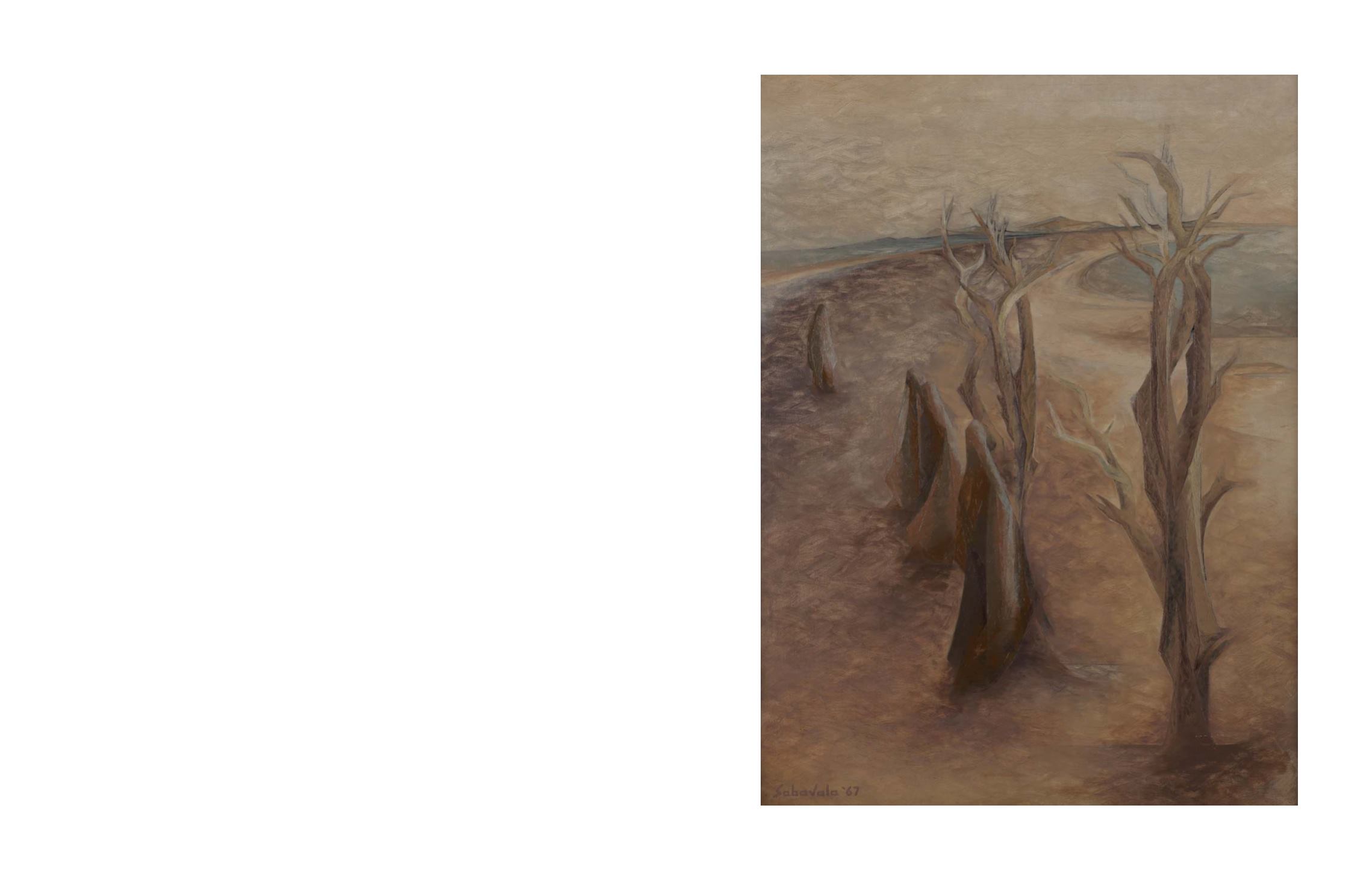

26
Saffronart | Evening Sale
PROPERTY FROM AN EMINENT
COLLECTION, NEW DELHI
11
JEHANGIR SABAVALA
(1922 ‒ 2011)
Stag-Antlered Trees
Signed and dated ‘Sabavala ‘67’ (lower left);
inscribed and dated ‘“Stag-Antlered Trees” /
Jehangir Sabavala / 1967’ (on the reverse)
1967
Oil on canvas
40 x 30 in (101.5 x 76.2 cm)
Rs 1,20,00,000 ‒ 1,50,00,000
$ 181,820 ‒ 227,275
PROVENANCE:
Private Collection, UK
Christie’s, New York, 20 September 2006, lot 46
PUBLISHED:
Dilip Chitre
, The Reasoning Vision: Jehangir
Sabavala’s Painterly Universe
, New Delhi: Tata
McGraw‒Hill Publishing Company Limited,
1980, p. 30 (illustrated)
Ranjit Hoskote,
Pilgrim, Exile, Sorcerer: The
Painterly Evolution of Jehangir Sabavala
, Mumbai:
Eminence Designs Pvt. Ltd., 1998,
p. 101 (illustrated)
Painted in 1967,
Stag‒Antlered Trees
was made at a time when
Jehangir Sabavala transitioned from his Cubist learnings to
a more personal, free‒flowing artistic language. During the
1960s, Sabavala made a conscious attempt at transcending
the principles of Cubism which he had learnt at the Academie
André Lhote a decade earlier. By the mid‒1960s, he realised
“the dangers of an over‒reliance on fragmentation... [and]
began his trek, his outward spiralling towards the vast horizons
lit by a cloudy incandescence that have held his unwavering
attention.” (Ranjit Hoskote,
The Crucible of Painting: The Art
of Jehangir Sabavala
,
Mumbai: Eminence Designs Pvt. Ltd.,
2005, p. 86) In a revealing statement to the American art
critic George Butcher in 1964, Sabavala wrote, “No longer am
I satisfied with the juxtaposition of planes, the search for rare
colour, the almost total denigration of the unpremeditated. It
is the intangible which is now my goal. Space and light, and
an element of mystery begin to permeate my canvasses.” This
shift in style is visible in
Stag Antlered‒Trees
.
The shrouded,
spectre‒like figures are slightly stooped, as if carrying a burden
on their shoulders as they trudge towards a distant horizon.
They make their way past leafless trees with barren boughs,
set against a monochromatic expanse of brown. Sabavala
constructs his canvas with a palette knife, building texture and
creating a dream‒like landscape.
The present lot forms an important part of Sabavala’s
continued interest in the themes of prophets, pilgrims in
exile, and journeys, which he explored in subsequent decades.
In a monograph on the artist, which features the present
lot, Dilip Chitre writes about
Stag‒Antlered Trees
observing,
“Throughout the period 1965‒75, certain configurations of
images recur in Sabavala’s work. The elements in this painting,
for instance, are familiar aspects of the inner landscape of
Sabavala: the distant horizon, the rising hill, the curved beach
and the sea beyond it, and the hooded women moving away
from the viewer. The bare trees and the women hurrying
onward are both vertical forms within a vertical frame. But the
trees are rooted in the arid landscape and are bleached to the
colour of dry bones. Without the hooded women hurrying
on, this landscape would be static and barren. The figures of
the women give the image its element of uncertainty and
urgency. The odd thing is that the women echo the vertical
form of the petrified trees: this is disturbing because the
dead, dry branches of the trees seem twisted permanently in
agony.” (Dilip Chitre,
The Reasoning Vision: Jehangir Sabavala’s
Painterly Universe
, New Delhi: Tata McGraw‒Hill Publishing
Company Limited, 1980, p. 66)
27


















